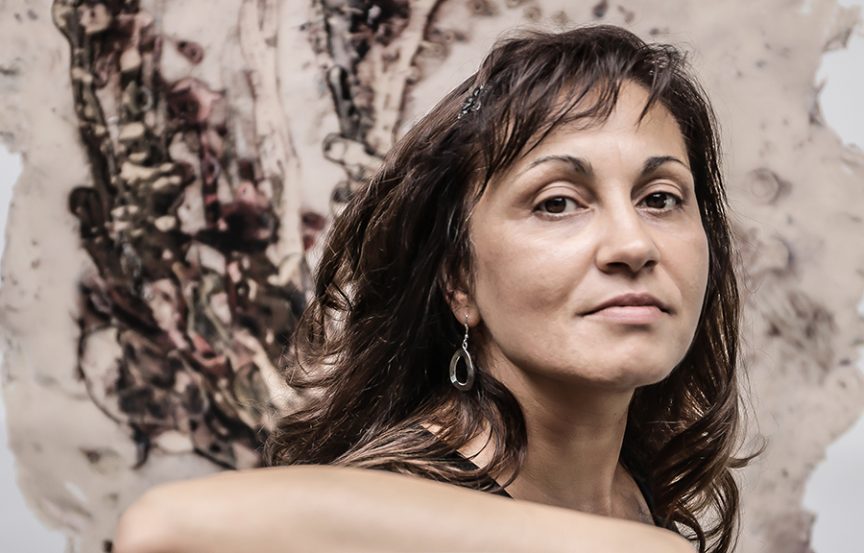Name: Valeriya N-Georg
Which came first in your life, the science or the art?
I would have to say art. From a very early age I was drawing, painting, dancing, singing … etc. In my childhood and teenage years I have always been busy with my artistic passions. I have also attended chemistry, biology and physics classes at my secondary school, but the real scientific inspiration for my art came later.
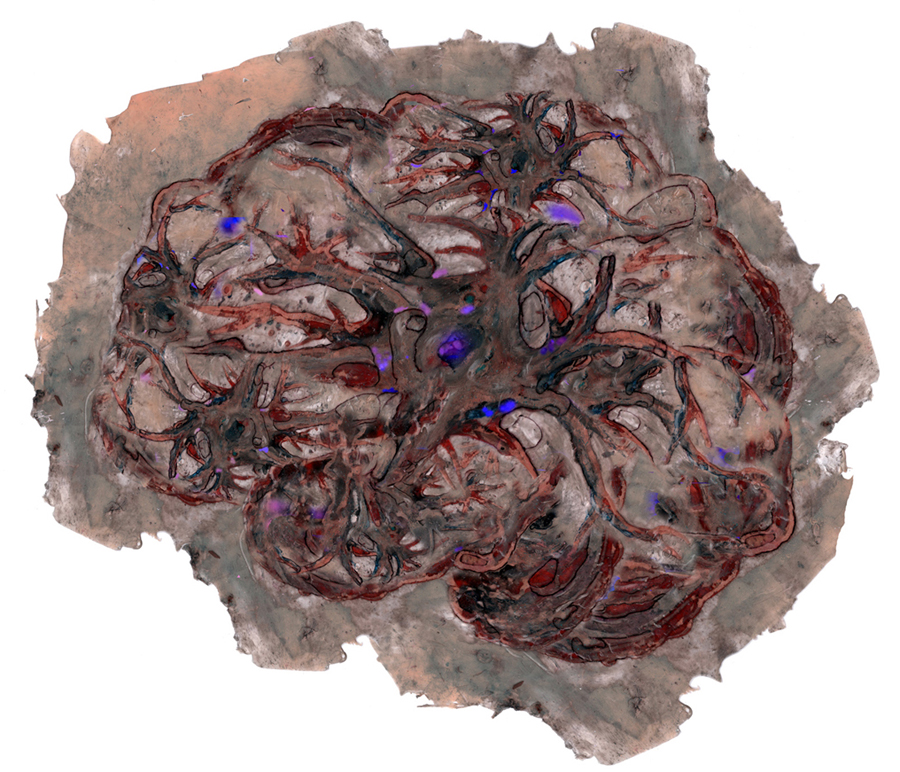
beauty in the brain
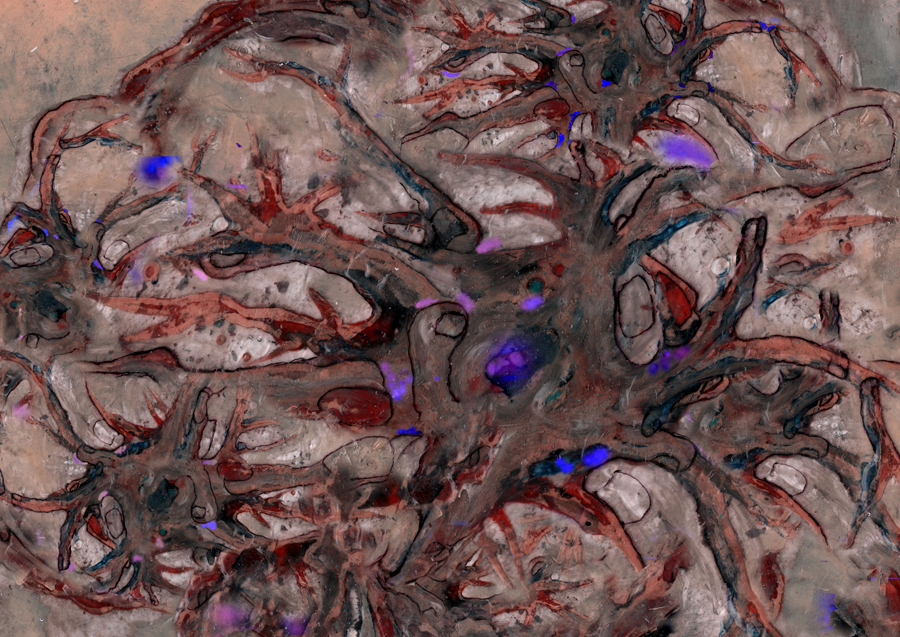
beauty in the brain (detail)
Which sciences relate to your art practice?
Mostly neuroscience, psychology and consciousness studies. Anatomy of the entire human body also is intertwined and fits perfectly with my interest of the human senses.
What materials do you use to create your artworks?
I combine digital production with making works by hand. I have developed new experimental techniques for making monotype prints based on layered acrylic gel. The gel is presented on boards and light box installations, which I scan, collage and digitally manipulate to create large-scale digital prints.
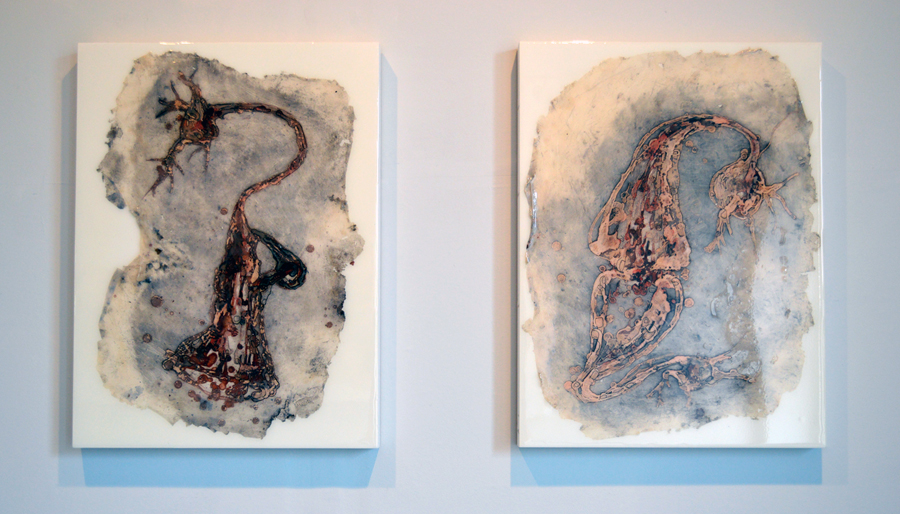
Synapses
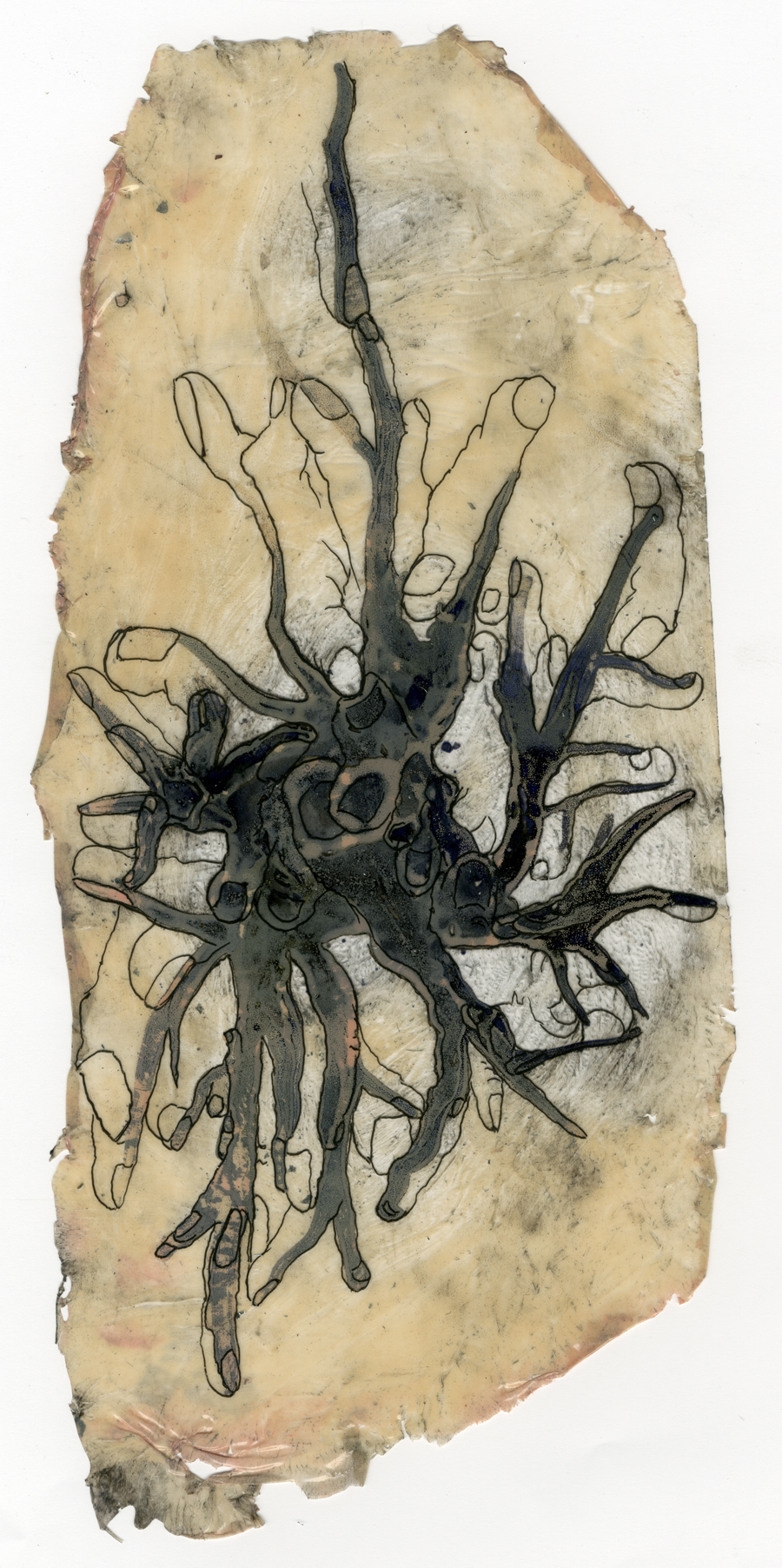
astrocyte
Artwork/Exhibition you are most proud of:
I am most proud of my solo show Corporis Fabrica in July 2016 at Lubomirov/Angus-Hughes Gallery in Hackney, London. Moreover, in 2014 my work entered the Global Eye Art Collection founded by Andrew Stevenson, who also commissioned a work on the subject of Optogenetics, the new neuromodulation technique employed in behavioural neuroscience.
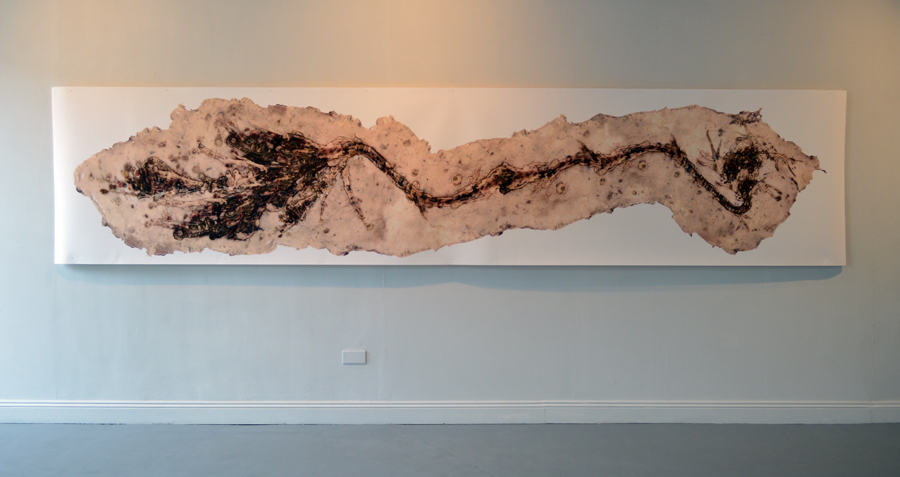
Axon (Corporis Fabrica installation view)
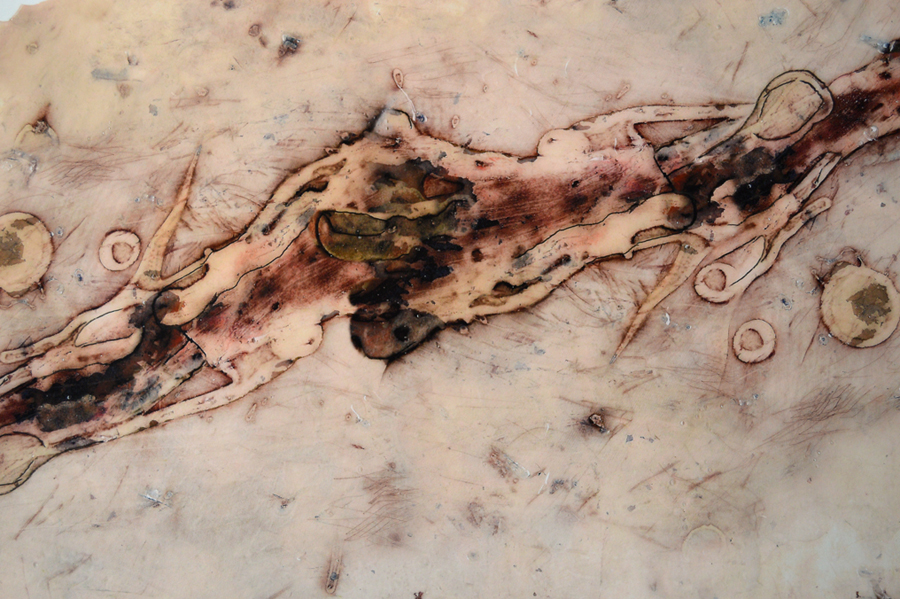
Axon (Detail)
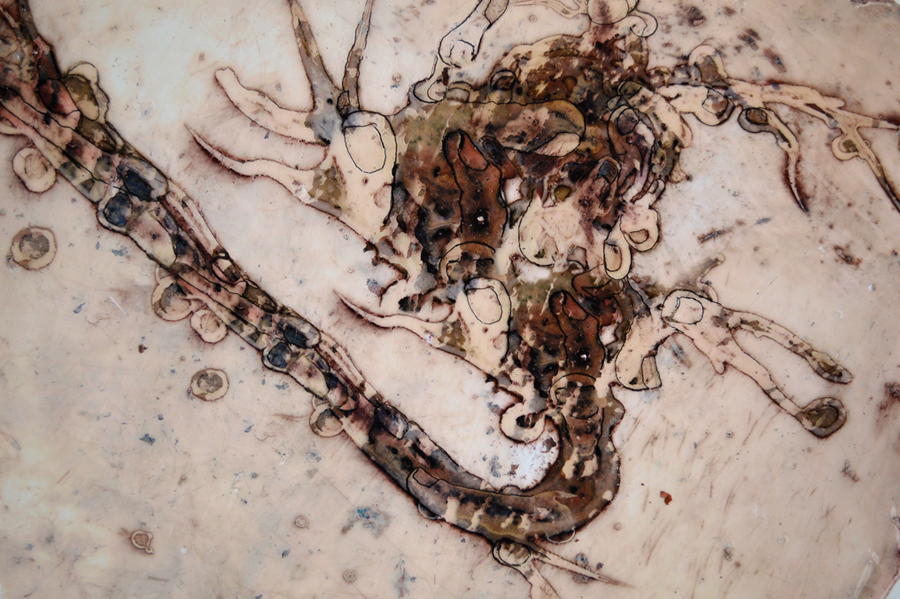
Axon (Detail)
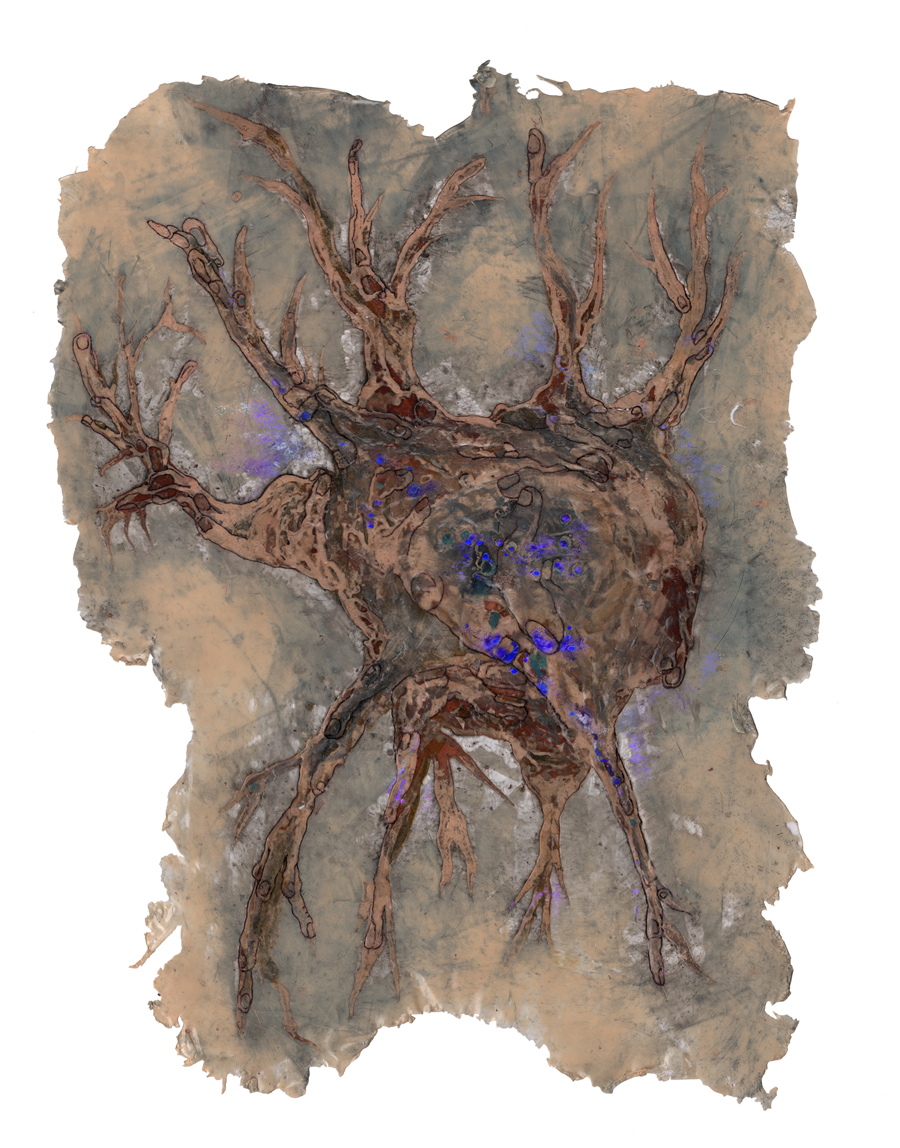
Optogenetics (digital print)
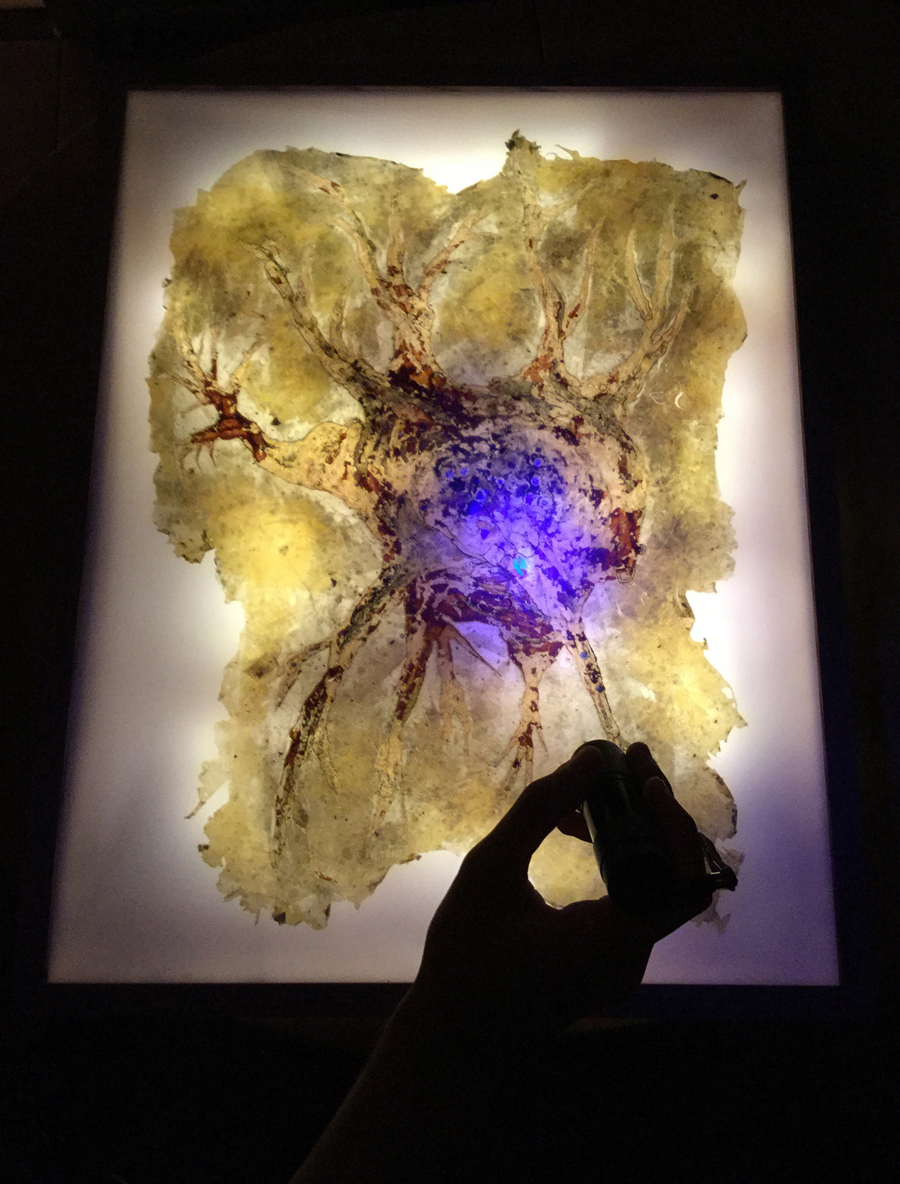
Optogenetics (light box with interactive UV light paint and UV torch)
Which scientists and/or artists inspire and/or have influenced you?
My work is deeply influenced by sources such as Antonio Damasio’s research on the relationship between the brain and the consciousness, the role of emotions and feelings for our life-regulating processes and mental representations of our body states. In addition, Dr. Bruce Lipton’s ideas about interactions between mind and body and the processes by which cells receive information.
Leonardo Da Vinci’s amazing drawings and scientific investigations are real inspiration. As well as James Turrell’s luminous and immersive installations that offers the viewer to experience emotional effects and profound revelation about perception and the materiality of light, color and space, where we become aware of the function of our own senses. Bill Viola’s use of innovative technology, video, sound and water exploring the phenomena of sense perception as a new way of self-knowledge. His focus on the universal human experiences as birth, death, dreams and unfolding of human consciousness has influenced my work quite a lot too.
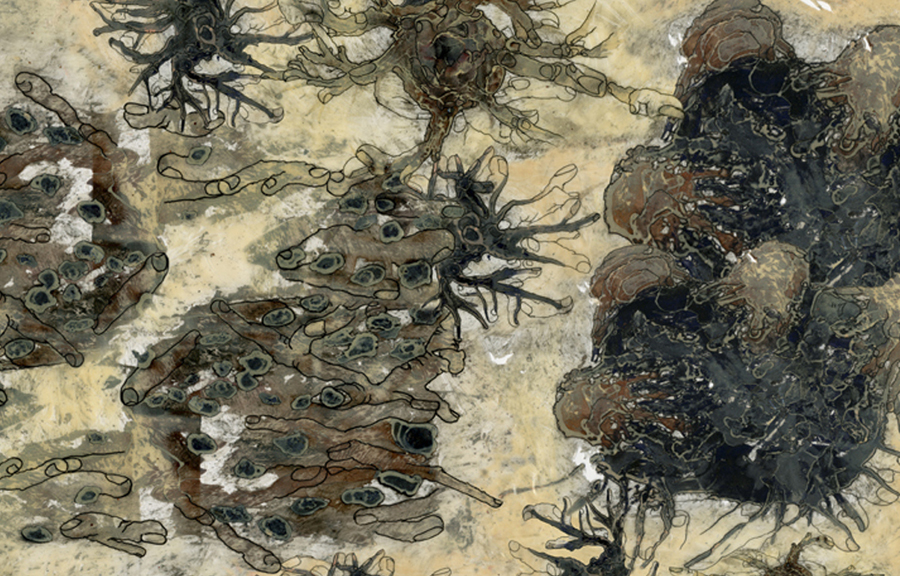
the battle (detail)
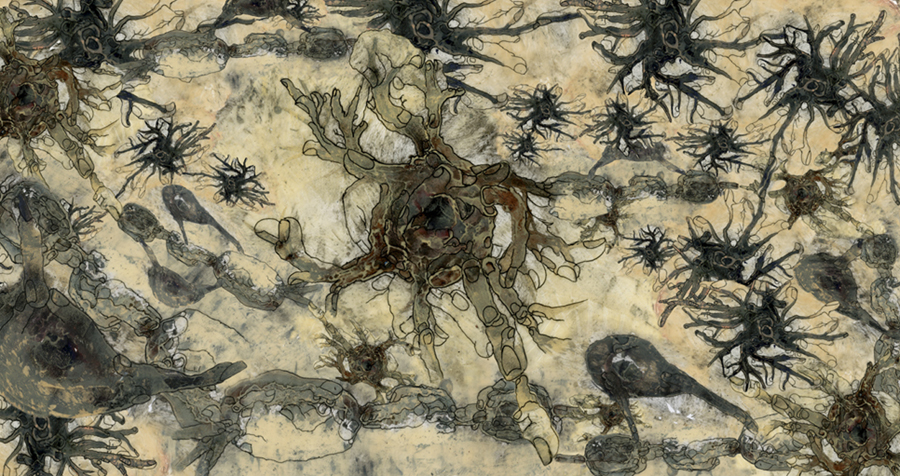
internal world (detail)
Is there anything else you want to tell us?
I enjoy working with scientists and artists on specific collaborative projects. I have been collaborating with Kitty Hagenbach, a parent/child psychotherapist for a project titled The 1001 Critical Days with an art and science exhibition titled Tomorrow’s Child at the Houses of Parliament in Westminster London.
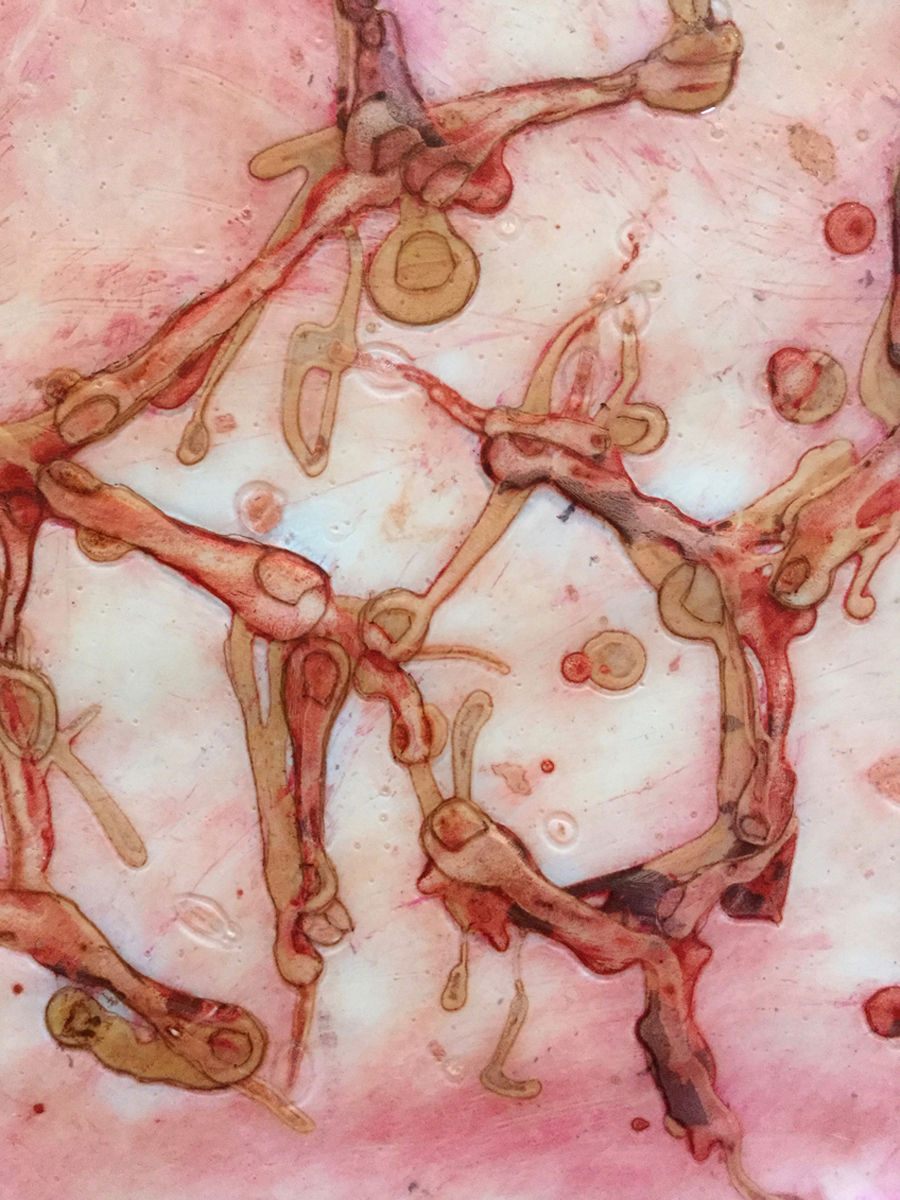
Oxytocin -Work in Progress (Collaboration with Iavor Lubomirov)
At the moment I am collaborating with Iavor Lubomirov, an Oxford trained mathematician, curator and artist, whose work is primarily sculptural. The new collaborative works are meeting of practices, materials and minds born from conversations about art, science and mathematics. All the works take as their starting point, ideas about the neurological mechanisms behind the positive human emotions that influence our wellbeing. The first collaborative work will be exhibited at Lubomirov’s unique solo exhibition Haloclines in Fitzrovia London, showcasing six of his collaborations with other artists.
Artist Links: Instagram, Twitter
Feature image by Ansell Cizic from his photographic series Artists and Artisans of The East End….The Wick and Beyond.
Share this Post

